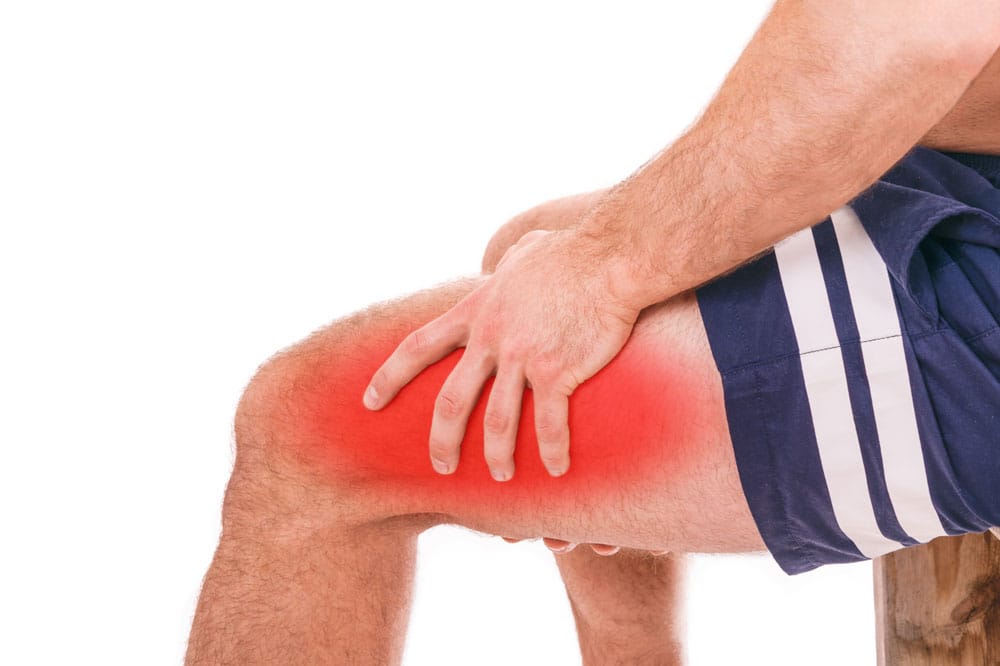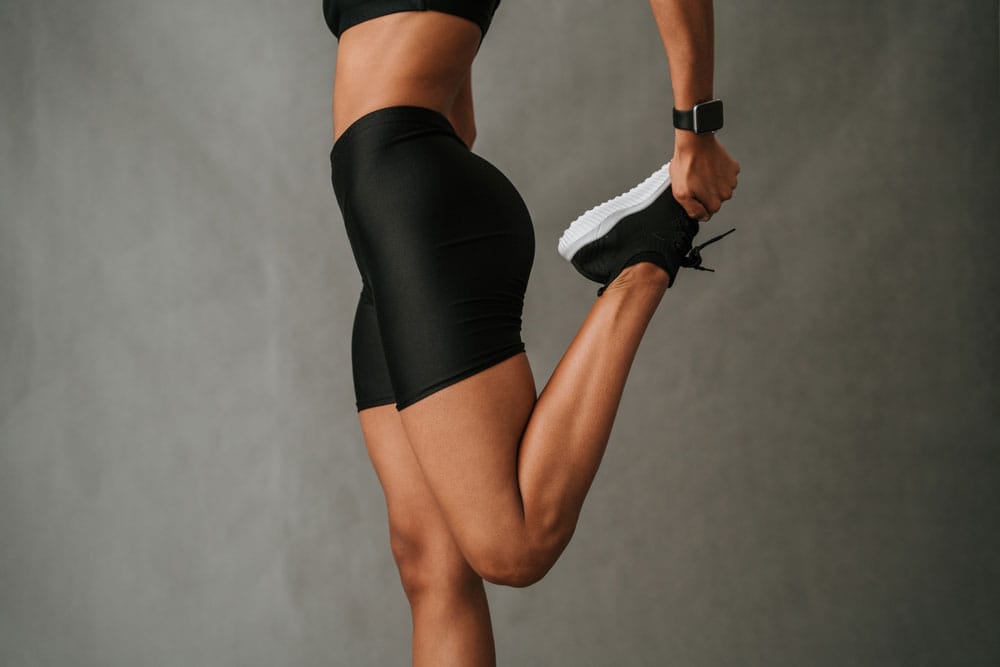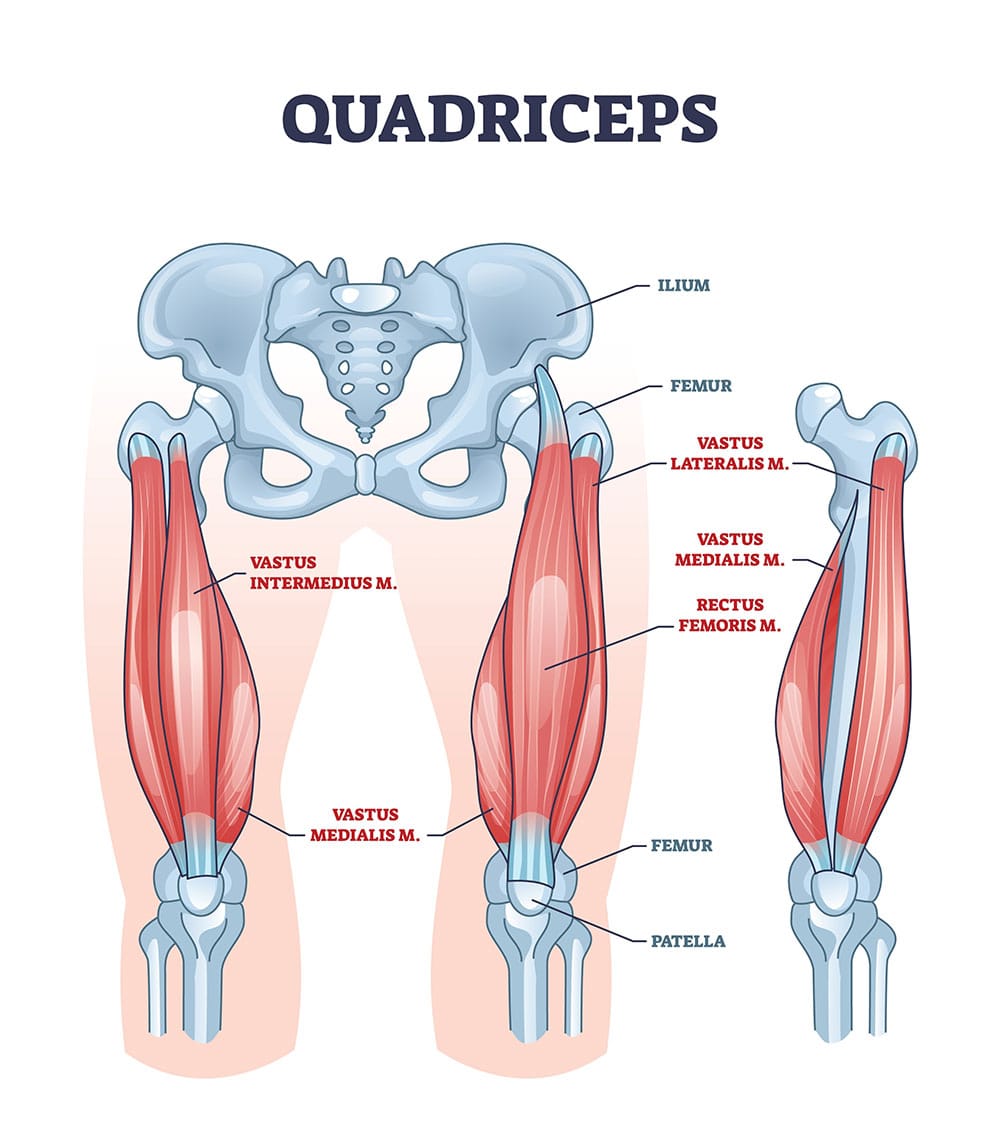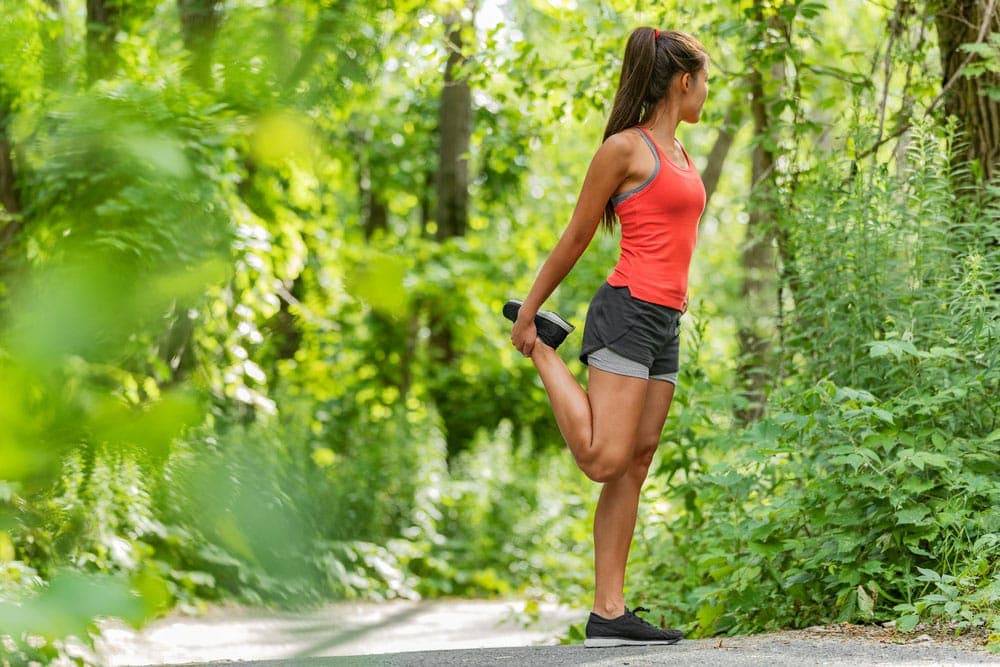How to Treat Sore Quads: Stretches, Exercises & Causes
Learn about sore quads and why this happens. Understand quadricep anatomy and fixes to relieve quad pain.
Why are my quads sore?
Sore quads can come from simple aches and pains associated with the motions of everyday life, as well as sports and overuse injuries. Using the quads too frequently, improper stretching, quadricep strains or pulled muscles can all cause sore quads.
Some causes are benign, others require concern. This article will take a look at a few common causes of quadricep pain and soreness.
We’ll unpack the main causes of sore quads due to sports or lifestyle factors.
Next, we’ll look at some simple solutions you can use to remedy sore quads. Finally, we’ll examine the anatomy and function of the quadriceps muscles. Stay tuned. Pain-free quads are just a few short paragraphs away.
Causes of sore quads
POV: You’ve started up a new running program and you’re excited to run a personal best time in your first 5k ever. But after each training run, all you can think about is the pain in your quadriceps. Sore quads are taking all the joy out of your training.
If you’ve encountered this situation or a similar situation and feel frustrated by sore quads, read on. These are some key reasons you may experience sore quads.
Overuse
If you’re a runner or cyclist, you’re putting your quads to work a lot.
Some endurance athletes travel 100 miles or more per week. This feat, while impressive creates a lot of work for your quads.
Muscle use causes damage to the tissues surrounding the muscles after you complete a workout. This is generally a good thing. Although it sounds bad for you, muscular damage is what allows your muscles to grow.
After the tissues heal and rebuild, they return stronger after the repair process. Hard workouts create muscular microtears. These trigger your body’s inflammatory response.
In order to fix the tears, your body has to work overtime to repair them causing your muscles to come back even stronger.
If you’re stretching properly and resting your muscles during your off time, this can be a good thing. But everyone has a threshold at which your exercise levels aren’t really conducive to healthy muscular repair and the overwork is just causing your quads more pain.
Pulled Muscles

If you’re a sports enthusiast, you may experience a pulled quad. Although anyone can pull their quadriceps muscles, it’s more common in those who participate in sports, especially with a lot of running or jumping.
For a pulled muscle, you’ll want to consider starting out with the RICE method. You can use this as the first line of treatment for many injuries for about 2 days after an injury.
One potential treatment option you can explore is the RICE method.
RICE Method
To start treating a pulled quad with RICE:
- R: Rest— Try to keep your arm at rest for at least 2 days post-injury. Aim to keep your arm still and refrain from activities like writing, typing, or cooking to the best of your ability.
- I: Ice– Apply an ice pack or cold pack to your injury for 15-20 minutes every 2-3 hours in the first two days after injury.
- C: Compression— Keep your arm in a bandage or sling if possible. This will help prevent movement. Make sure your bandage is attached securely to prevent movement, but not so much so that it restricts blood flow.
- E: Elevation— Bring your injured tricep above your heart. This is thought to help reduce throbbing or swelling at the site of injury. Resting your arm on the back of your couch or a nearby shelf are a few options to keep it elevated.
This technique has been linked to some benefits for minor acute injuries that involve swelling at a muscle or joint area. That being said, there is emerging research that RICE may not be the most effective treatment for injuries.
Because you’re applying ice to an injury, RICE may actually counteract the principles of injury healing. Typically, an injury needs more oxygen in the given area to begin the healing process.
For differing perspectives, so you can decide if the RICE method is right for you, you can consult these resources:
- Treatment of Perioperative Swelling by Rest, Ice, Compression, and Elevation (RICE)
- What Is the Evidence for Rest, Ice, Compression, and Elevation Therapy
- The R.I.C.E Protocol is a MYTH: A Review and Recommendations
These studies were primarily performed on ankle sprains, so different factors may make these conclusions more or less relevant to a quadricep injury. However, this remains to be studied.
How do I fix sore quads?
Want to keep your quads healthy on the regular so that they don’t get sore?
If sore quads seem like a constant for you, there are a few good habits you should take up to keep the pain at bay.
Quad Workouts
As a preventative measure against sore quads, strong quads are a great remedy.
Building up the muscles of your quads overall can help you
For some quad-friendly exercises that will strengthen and tone these powerful muscles, here are some options to try and informational resources:
Quad Stretching

A simple quad stretch after any workout where you’re targeting the quadriceps can be a key to making quad pain go away.
Try this stretching routine if you suffer from sore quads:
- Set-Up: Stand with your feet hip-distance apart. Ground down into your left foot to stretch to get your balance.
- Stretch: Slowly curl your right leg up and back towards your buttocks. Catch the right hand with the right foot balancing on the left foot.
- Time and Repetition: Hold the stretch for at least 30 seconds. Repeat on the other side.
Continue this simple quad stretch as many times as you need. Try to perform the stretch while your muscles are still warm after a workout.
If you’re consistent with it, you should notice less sore quads, especially after endurance exercises like running.
Hydration
One of the most surprising culprits when it comes to muscle soreness is dehydration.
Staying hydrated is a key component of muscular recovery. This is crucial during and after your workouts and throughout the day, even if you’re taking a rest.
Even mild dehydration (defined as losing 1-2% of your body weight from loss of fluids) has negative consequences. You may experience headaches, exhaustion and irritability.
Concerning exercise, water helps to keep everything moving smoothly inside your body. It can flush out waste byproducts of exercise more quickly and also help reduce the inflammation that leads to muscle soreness.
One oft-cited guideline for hydrating is the “8x8 rule” or eight glasses of water eight times a day.
This works for many people, but there is no scientific evidence to support a reason for this rule. Depending on your age, overall health and exercise levels, your thirst cues can vary drastically.
Fortunately, most humans have good natural thirst responses.
If you feel thirsty, have some water (not beer).
You can also use the color of your urine as a gauge for how well you’re hydrating. Ideally, urine should be a pale yellow almost clear hue.
If your pee looks dark yellow or brownish and has a strong hue, you’ve likely gone too long without a glass of water.
Hydrate to keep those muscles functioning optimally. This will help alleviate sore quads and so much more.
Quadriceps Muscle Anatomy
The quadriceps femoris, aka quadriceps, are the muscles at the front of your thighs. These muscles serve a double purpose as a hip flexor and knee extensor.
These muscles help you maintain your posture, keep your knees stable and follow a steady gait when you walk.
The quadriceps muscle group has four separate muscles:
- Rectus femoris (RS)
- Vastus lateralis (VL)
- Vastus medialis (VM)
- Vastus intermedius (VI)
All four heads of the quadriceps connect to insert at a common tendon called the quadriceps tendon. This tendon attaches to your patella (your kneecap).

Get quads that are strong, not stiff, by tracking your leg day workouts. The Flex App progresses as you do with plate tracking capabilities and auto progression.
References
Fischer, D. C., Sckell, A., Garkisch, A., Dresing, K., Eisenhauer, A., Valentini, L., & Mittlmeier, T. (2021). Treatment of perioperative swelling by rest, ice, compression, and elevation (RICE) without and with additional application of negative pressure (RICE+) in patients with a unilateral ankle fracture: study protocol for a monocentric, evaluator-blinded randomized controlled pilot trial. Pilot and feasibility studies, 7(1), 203. https://doi.org/10.1186/s40814-021-00944-7
Posada-Quintero, H. F., Reljin, N., Moutran, A., Georgopalis, D., Lee, E. C., Giersch, G. E. W., Casa, D. J., & Chon, K. H. (2019). Mild Dehydration Identification Using Machine Learning to Assess Autonomic Responses to Cognitive Stress. Nutrients, 12(1), 42. https://doi.org/10.3390/nu12010042
Scialoia D., & Swartzendruber A.J. (2020). The R.I.C.E protocol is a myth: A review and recommendations. The Sport Journal.
https://thesportjournal.org/article/the-r-i-c-e-protocol-is-a-myth-a-review-and-recommendations/
van den Bekerom, M. P., Struijs, P. A., Blankevoort, L., Welling, L., van Dijk, C. N., & Kerkhoffs, G. M. (2012). What is the evidence for rest, ice, compression, and elevation therapy in the treatment of ankle sprains in adults?. Journal of athletic training, 47(4), 435–443. https://doi.org/10.4085/1062-6050-47.4.14
Related articles


Get fit with Flex
Build muscle & lose weight fast for free.
Available on iPhone + Apple Watch





